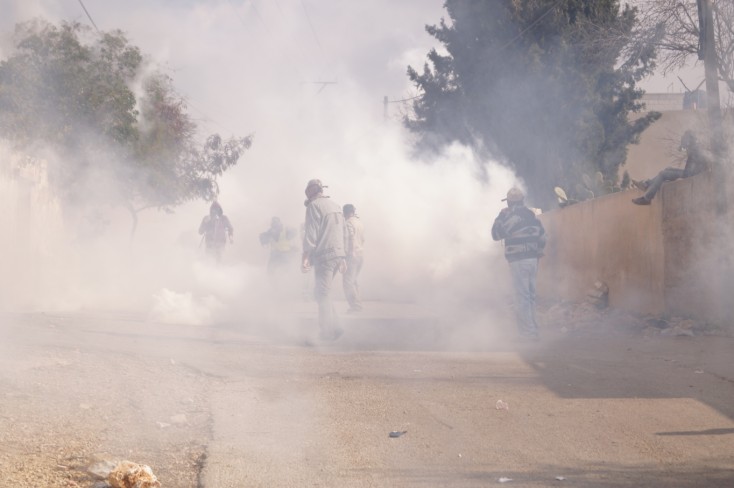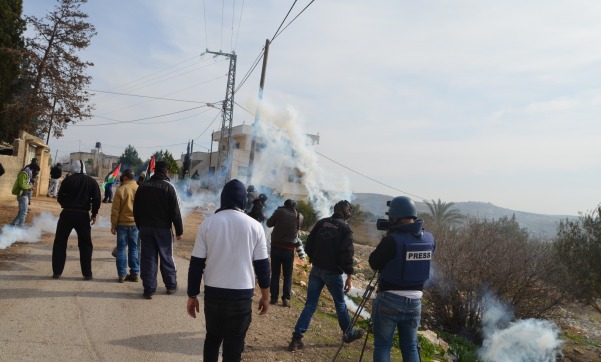Tag: Tear-Gas Canister
-
Weekly protest at Kafr Qaddum met with exceptional violence
24th January 2014 | International Solidarity Movement, Nablus Team | Kafr Qaddum, Occupied Palestine On Friday 24th January, 2014, the weekly demonstration in Kafr Qaddum, in the Qalqilya district, was repressed by excessive force, to a much greater extent than on most Fridays. By 11:00 a.m., clashes had already broken out between local youths and Israeli soldiers…
-
One Palestinian arrested during demonstration in Kafr Qaddum
03rd January 2014 | International Solidarity Movement, Nablus Team | Kafr Qaddum, Occupied Palestine Today, at the weekly Kafr Qaddum demonstration, Israeli soldiers and border police violently suppressed the protest and arrested a Palestinian citizen. Clashes between Palestinian youth and Israeli soldiers erupted after the Friday prayer when the Israeli military began bulldozing pre-made stone barricades…
-
85-year-old Saeed Ali Gasser from Kafr Qaddum, killed by suffocation from tear gas
02nd January 2014 | International Solidarity Movement, Nablus Team | Kafr Qaddum, Occupied Palestine Yesterday, Wednesday 1st January, Israeli forces raided the village of Kafr Qaddum during an anniversary march to commemorate the start of the Fatah movement, 49 years ago. Israeli soldiers and border police shot many tear gas canisters towards the villagers and into…



